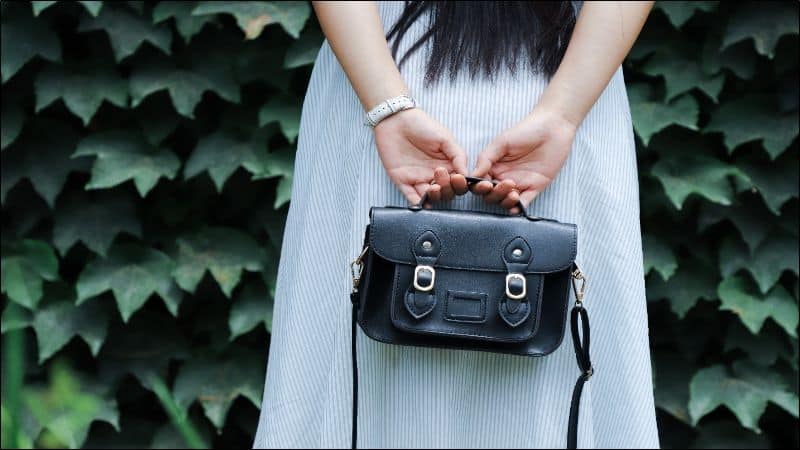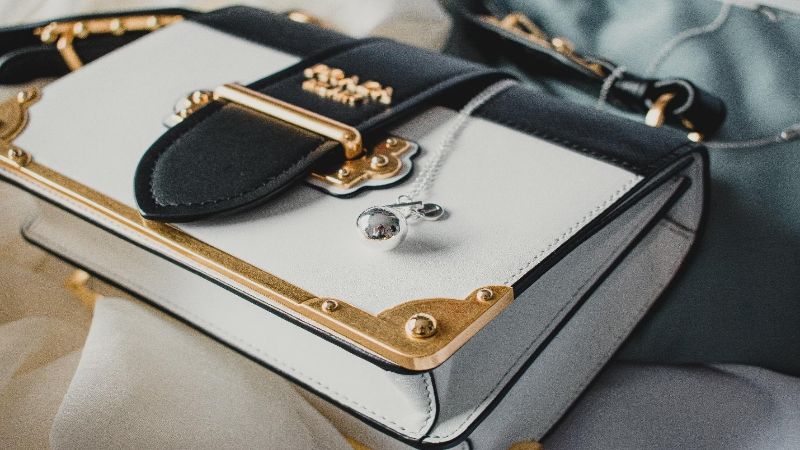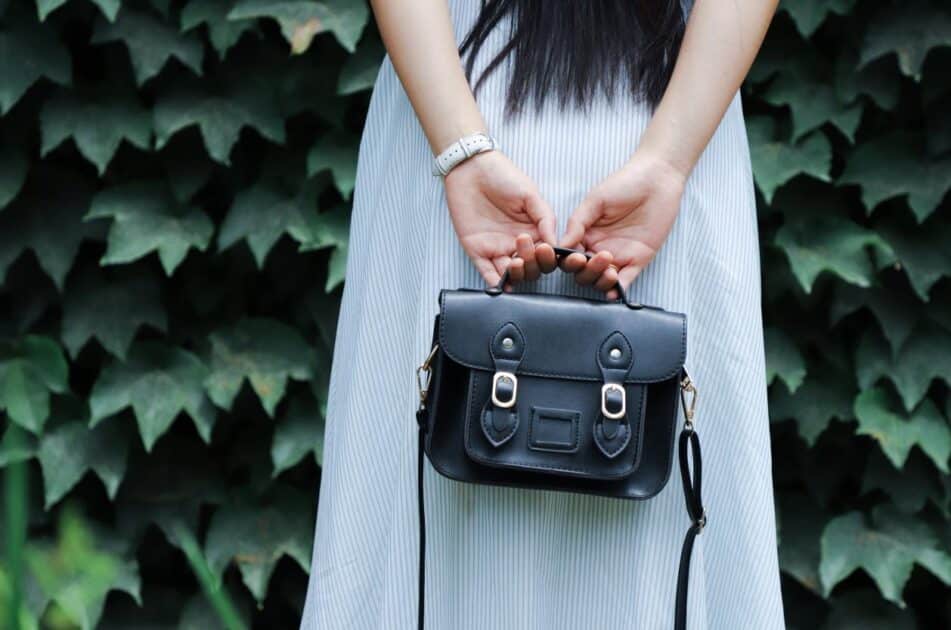You’ve just dug out that old leather handbag from the back of your closet. It’s seen better days, but you’re not ready to part with it just yet. Don’t worry, you’re about to breathe new life into that beloved accessory.

Restoring a leather handbag isn’t just about making it look good—it’s about preserving memories and giving a nod to sustainable fashion. With a few simple steps, you’ll have your handbag looking as chic as the day you first slung it over your shoulder.
Ready to get started? Let’s dive into the world of leather restoration and ensure your handbag can strut its stuff for years to come.
Assessing the Condition of Your Leather Handbag
Before diving into the restoration process, you need to thoroughly assess the condition of your leather handbag. This step is crucial as it determines the extent of care and the methods suitable for rejuvenation.
Start by examining the exterior. Look for signs of:
- Scratches or scuffs
- Stains or water marks
- Fading or discoloration
- Peeling or cracking
Next, inspect the hardware. Check for:
- Tarnishing or rust
- Loose or missing parts
- Functionality of zippers and clasps
Don’t forget the interior. Be on the lookout for:
- Rips or tears in the lining
- Stains
- Unpleasant odors
Evaluate the handbag’s shape and structure. Check for:
- Deformities
- Collapsed sections
- Weak seams or stitches
Keep track of all the issues you find. This record will guide your restoration plan, ensuring you don’t miss any detail that could hinder your handbag’s return to its former glory.
Cleaning and Removing Stains
Once you’ve assessed your leather handbag, the next step is tackling the cleaning aspect. Begin with gentle leather cleaner—you don’t want to use anything too harsh that may damage the leather. Apply the cleaner with a soft cloth, using a circular motion and taking care not to over-saturate the leather. Next, wipe off the cleaner with a different clean, damp cloth to remove any residue.
For peskier stains, there’s a secret weapon: rubbing alcohol or non-gel toothpaste. These can be effective for ink or deeper set stains:
- Dab rubbing alcohol onto a cotton swab.
- Gently apply to the stain in a blotting motion.
- For toothpaste, apply a small amount to the stain and rub gently with a soft cloth.
- Wipe the area clean with a damp cloth.
Remember to always test any stain-removal method on an inconspicuous part of the handbag first to avoid any unexpected damage.
For oil or grease stains, use a process that involves a bit of patience:
- Sprinkle the stain with baking soda or cornstarch.
- Let it absorb the oil overnight.
- The next day, brush the powder off gently with a soft-bristled brush.
Avoid using water to clean oil stains as it can cause the oil to spread and worsen the issue.
Keep in mind that some stains may not come out completely, especially if they’ve set for a long time. However, these methods often greatly reduce their appearance, making your handbag look much better.
Your handbag’s exterior isn’t the only part that needs attention. Don’t forget to vacuum the interior with a soft brush attachment to remove crumbs and debris. If the lining has stains, you can lightly dab it with a mixture of mild soap and warm water—be sure not to soak it. Then, let the interior air dry completely before moving on to the next step in your restoration process.
Repairing Scratches and Scuffs
When your beloved leather handbag suffers scratches or scuffs, don’t despair. You’ve got several at-home remedies you can try. Start with the least invasive method first to ensure you’re not causing more harm.
For light scratches, olive oil or leather conditioner can be your best friend. Rub a small amount onto the affected area using a circular motion. Let it sit for an hour, then buff with a soft cloth. The oils often hydrate the leather and allow the scratch to blend away.
If the scratches are deeper, you may need a leather repair kit. These kits usually include a filler compound and a tool to apply it. The steps are simple:
- Clean the area around the scratch.
- Apply the filler.
- Allow it to dry according to the kit’s instructions.
« Handbag with Water Bottle Pocket: Stay Chic and Hydrated Everywhere
How to Make a Handbag with Cloth: DIY Your Chic Accessory »
After the filler has dried, use a colorant from the kit that matches your handbag and apply it to the repaired area. This not only blends the repair but also revives the bag’s overall appearance.
Scuffs can be tackled with a soft eraser. Gently rub it over the scuffed area until it fades. Do not apply too much pressure or you risk damaging the leather’s surface.
When your handbag has a consistent color but the scratches are still visible, shoe polish of the same color can be a quick fix. Apply a small quantity to the scratch and buff it gently. Remember that this is a temporary solution, though, and may need to be reapplied after some time or after exposure to rain or moisture.
Always test these methods in an inconspicuous spot first. This way, you’ll avoid a heart-wrenching moment if the leather doesn’t respond well. Leather is resilient but requires gentle care, especially when correcting blemishes like scratches and scuffs.
Restoring Color and Shine
Reviving your leather handbag’s color and shine might be easier than you think. Sun fading and regular wear can dull even the finest leather over time. But with the right products and techniques, you can breathe new life into an old favorite.
To start, choose a leather dye that matches your bag’s original color. Keep in mind that dye can be mixed and diluted to achieve the perfect shade. Apply the dye with a clean cloth, working in circular motions and taking care not to over-saturate.
Once the dye has dried, it’s time to focus on the shine. Apply a high-quality leather cream with a soft cloth. Work in small areas, and buff the leather to a soft luster. This not only restores shine but also adds a protective layer against future wear.
If you’d rather not use dyes, consider a leather refinisher. These products can provide a more uniform color restoration and are great for dealing with overall wear or discoloration. Ensure the product you choose is appropriate for the type of leather of your handbag.
After restoring the color, it’s crucial to maintain it. Use a UV leather protector to safeguard against sun damage. This step helps prevent future color fading and keeps the leather supple.
- Match the dye to your bag’s color.
- Mix and dilute dye as needed.
- Apply dye with a clean cloth in circular motions.
- Buff leather with a high-quality cream for shine.
- Opt for a leather refinisher for uniform restoration.
- Protect with UV leather protector to prevent fading.
Remember, the key to a successful restoration is patience. Always work in thin layers and allow ample drying time between coats. With diligent care, your leather handbag will look as good as new—or perhaps even better.
Conditioning and Protecting the Leather
After revitalizing the color of your leather handbag, it’s time to ensure it remains supple and damage-free. Conditioning is vital as it hydrates the leather, much like moisturizer for your skin. Without regular conditioning, leather becomes dry and brittle, leading to cracks and premature aging.
Start by selecting a high-quality leather conditioner. Characteristics to look for include:
- Natural ingredients
- Absence of harmful chemicals
- Positive reviews from users
Apply the conditioner with a soft microfiber cloth. Work in gentle, circular motions to encourage even distribution and absorption. Focus on areas that tend to dry out faster, such as corners and edges.
Remember, less is often more. You don’t want to over-condition your bag, which can make the leather overly soft and prone to losing its shape. A good rule of thumb is to condition your leather handbag every three to six months, depending on its usage and exposure to elements.
Next comes protection. While conditioning helps maintain the leather’s health, protecting it from the outset is equally important. A water-repellent treatment can save your day when unexpected rain hits. Look for a product that offers:
- Water resistance without sealing the leather pores
- Easy application by spray or cloth
Before applying any protectant, always perform a spot test in a concealed area to ensure it doesn’t alter the leather’s appearance. Once applied, allow your handbag to dry naturally, away from direct heat sources.
Regular maintenance, including cleaning and storing your leather handbag properly, will maintain its quality for years to come. Store it in a cool, dry place away from sunlight and use a padded bag shaper to preserve its form while not in use. Dust bags or pillowcases can also protect your bag from dust and scratches when it’s not on your arm making a statement.
Conclusion
Restoring your leather handbag isn’t just about bringing back its luster for the short term; it’s about investing in its longevity. Remember that the key to a beautifully maintained bag is in the regular care you provide. Your efforts will pay off, ensuring your cherished accessory stays supple and stylish for all the adventures you’ll have together. So go ahead, give your leather companion the TLC it deserves, and it’ll continue to turn heads for years to come.
Frequently Asked Questions
How often should I condition my leather handbag?
Condition your leather handbag every three to six months with a high-quality leather conditioner to prevent it from becoming dry and brittle. Use a soft microfiber cloth to apply the conditioner in gentle, circular motions.
What is the best way to apply leather conditioner to my handbag?
Apply leather conditioner with a soft microfiber cloth, using gentle, circular motions. Pay particular attention to areas that tend to dry out more quickly, but make sure not to over-condition, which can lead to the leather becoming overly soft.
Can over-conditioning damage a leather handbag?
Yes, over-conditioning can make the leather overly soft and may interfere with the handbag’s structure and durability. It is important to follow product instructions and only condition when necessary.
Is it necessary to protect my leather handbag with water-repellent?
Protecting your leather handbag with a water-repellent treatment is vital to prevent water damage. Always perform a spot test before applying any protectant and allow the bag to dry naturally.
What are some tips for storing my leather handbag?
Store your leather handbag in a cool, dry place. Use a padded bag shaper or insert to maintain its shape and a dust bag to protect it from dust and scratches. Avoiding exposure to direct sunlight can also prevent fading and drying out.










